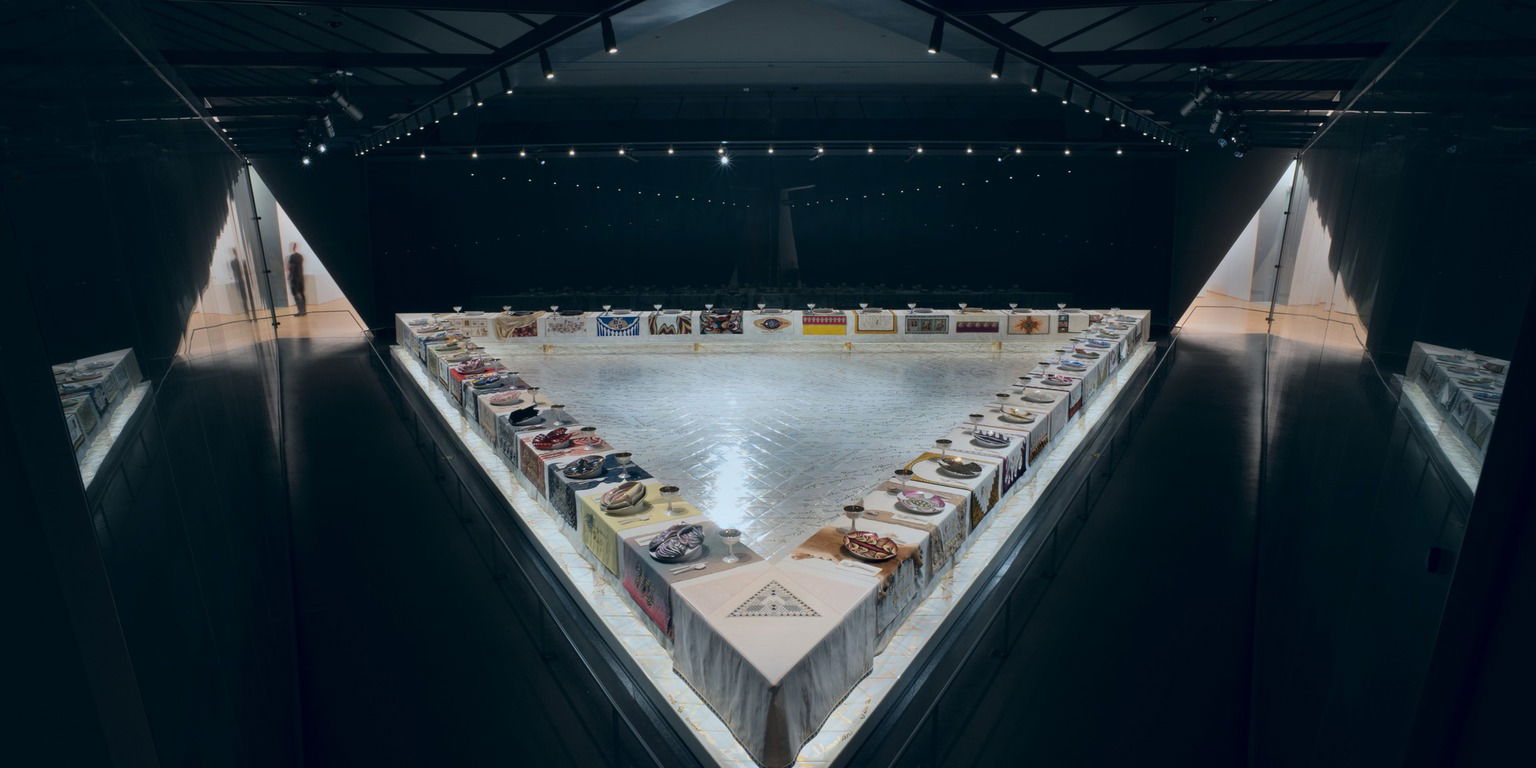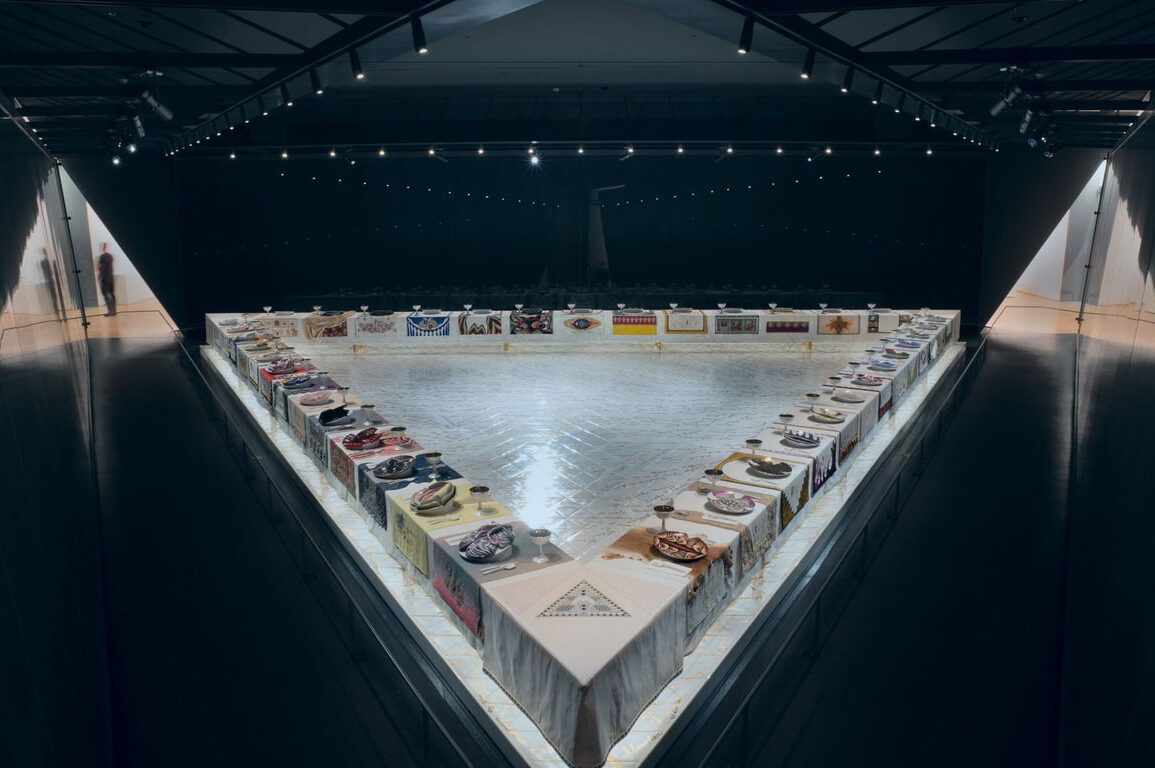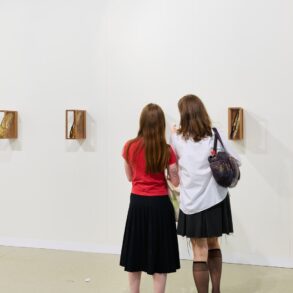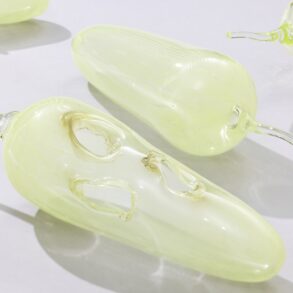
The Brooklyn Museum is commemorating its 200th anniversary by spotlighting 200 standout objects in its encyclopedic collection.
Judy Chicago’s The Dinner Party (1974–79) is an icon of 1970s American feminist art, one of the most important artworks of the 20th century, and a visitor favorite. The large-scale installation celebrates the lives and achievements of historical and mythical women across Western civilization in the form of a lavish banquet table set for 39. The names of 999 more women stream out on the Heritage Floor. Conceptually daring and visually dazzling, Chicago’s landmark artwork challenges centuries of patriarchal erasure of women’s history. This feat is executed in brilliant detail across the painted and shaped ceramic plates and richly embellished needlework runners, materials specifically chosen for their resonance with so-called women’s work.
Once derided as “3-D ceramic pornography” by a U.S. congressman, The Dinner Party’s symbolic layers reward close looking. They focus on the “central core” (or vulvar) imagery in an unprecedented embrace of body-based abstract art that was highly controversial in the years following its debut. Despite the critics, The Dinner Party was always beloved, attracting droves of visitors eager to see women’s history fully celebrated. The gift of this work to the Brooklyn Museum created the Center for Feminist Art, where the installation is on permanent display and surrounded by rotating galleries of feminist art.
The principal component of The Dinner Party is a massive ceremonial banquet arranged in the shape of an open triangle—a symbol of equality—measuring forty-eight feet on each side with a total of thirty-nine place settings. The “guests of honor” commemorated on the table are designated by means of intricately embroidered runners, each executed in a historically specific manner. Upon these are placed, for each setting, a gold ceramic chalice and utensils, a napkin with an embroidered edge, and a fourteen-inch china-painted plate with a central motif based on butterfly and vulvar forms. Each place setting is rendered in a style appropriate to the individual woman being honored.
Wing One of the table begins in prehistory with the Primordial Goddess and continues chronologically with the development of Judaism; it then moves to early Greek societies to the Roman Empire, marking the decline in women’s power, signified by Hypatia’s place setting. Wing Two represents early Christianity through the Reformation, depicting women who signify early expressions of the fight for equal rights, from Marcella to Anna van Schurman. Wing Three begins with Anne Hutchinson and addresses the American Revolution, Suffragism, and the movement toward women’s increased individual creative expression, symbolized at last by Georgia O’Keeffe.
Learn more about components of The Dinner Party.
This post was originally published on this site be sure to check out more of their content








